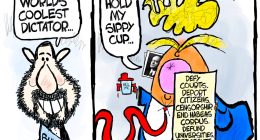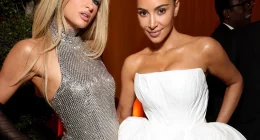Keeping the band together could catapult the Mets’ payroll into a whole new stratosphere.
Team owner Steve Cohen has kept expenditures this season under the third luxury-tax threshold of $300 million. But if the Mets want to return intact a team that is steamrolling toward the franchise’s first postseason appearance in six years, it will take significantly more than the $291.8 million payroll (according to Spotrac), as calculated for the competitive balance tax, currently in place.
The cost of keeping this year’s team intact, according to our Post analysis, could push the Mets to a $345 million starting point for next season in payroll, before even addressing potential bullpen and depth upgrades. In any case, the Mets could just be getting started in spending what it takes to build and maintain a winner. A breakdown:

Starting rotation
Jacob deGrom has indicated on multiple occasions that he plans to opt out after the season. Under the terms of the contract he signed before the 2019 season, he is owed $30.5 million for next year. It’s a safe bet if deGrom and the Mets strike a new deal it will be for a contract that pays him north of the $43.3 million Max Scherzer is scheduled to earn in 2023. Let’s take it a step further and suggest deGrom gets a multiyear deal that pays him $50 million annually.
Chris Bassitt will also be looking to cash in on the open market (technically there is a mutual option for next season in his contract worth $19 million, but the chances are slim the right-hander would exercise it on his end). Bassitt, who will turn 34 in spring training, figures to command a multiyear deal that at minimum would keep him in that $19 million AAV neighborhood.
Taijuan Walker’s deal includes a player option for next season worth $7 million that he will almost certainly decline, placing him on the open market. Walker, who turns 30 on Saturday, has been an integral piece of the Mets’ rotation over the past two seasons. A comparison might be Jon Gray, who received a deal from Texas last offseason worth $14 million annually.
Carlos Carrasco’s contract holds a $14 million option for 2023 that kicks in at 170 innings as long as the right-hander finishes the season healthy. Carrasco (124 ¹/₃ innings) is on pace to reach that level with roughly 10 starts remaining.
David Peterson and Tylor Megill are backup rotation options who likely will cost less than $3 million combined.
Estimated 2023 starting rotation salaries: $143 million (would be more than 14 teams’ entire payrolls this season, per Spotrac).

Bullpen
Edwin Diaz will be in position to command the largest contract for a reliever in baseball history. The record is Liam Hendricks’ $18 million AAV with the White Sox. There’s no reason to believe Diaz, a free agent after this season, can’t surpass $20 million and possibly approach $25 million annually on the open market.
Adam Ottavino has been a bargain for the Mets this season at $4 million. The right-hander, operating on a one-year contract, might at least double that number next season. Seth Lugo is also headed toward free agency and will significantly bump his $3.9 million salary this season, perhaps to $8 million. It’s hard to say relievers such as Trevor May, Mychal Givens, Joely Rodriguez and Trevor Williams would fit next season’s template, but Joey Lucchesi ($1.5 million and arbitration eligible) and Drew Smith ($750,000 and arbitration eligible) are in the mix.
Estimated 2023 bullpen salaries: $44 million

Infield
Francisco Lindor is set to earn $34.1 million next season in the second year of his Mets record contract extension. Robinson Cano’s major league career is likely finished — he’s been released by three teams this season — but the Mets will still pay him $20.5 million as he completes the 10-year deal he signed with the Mariners.
Pete Alonso and Jeff McNeil will both be heading to their second year of arbitration eligibility. Both are enjoying fine seasons and will receive significant raises. It’s probably not a stretch to suggest Alonso will double the $7.4 million he is earning this season. McNeil, who is earning $3 million this year, could receive in the $8 million range. Eduardo Escobar is due $9.5 million next season in the last year of his contract. Luis Guillorme is arbitration eligible for the first time and could be somewhere in the $2 million neighborhood.
Estimated 2023 infield salaries: $89 million

Outfield
Brandon Nimmo recently told The Post he was informed during the All-Star break the Mets want him beyond this season. Nimmo, set to hit free agency, hired Scott Boras as his agent last winter. It’s easy to envision a long-term deal for the outfielder that averages at least $20 million annually.
Starling Marte’s contract calls for a $5 million increase that will bring him to $20.7 million for next year. The veteran outfielder signed a four-year deal last offseason worth $78 million.
Mark Canha is owed $11.6 million for next season in the final year of his contract.
Estimated 2023 outfield salaries: $52 million

Catcher
James McCann’s contract includes a $4 million raise that brings his salary to $12 million. Even if the Mets were to trade the veteran, they will end up paying most of the $24 million he is still owed through 2024. Tomas Nido is arbitration eligible for the first time and could get $2 million. Francisco Alvarez will only cost the Mets the rookie minimum for next season: $720,000.
Estimated 2023 catcher salaries: $15 million
DH
Daniel Vogelbach is arbitration eligible for the first time and could land in the $2 million range. Dominic Smith and Darin Ruf probably don’t fit beyond the season, and we will also operate under the assumption Tyler Naquin, an impending free agent, is just a rental.
Estimated 2023 DH salaries: $2 million



![‘Marie Antoinette’ on PBS: Lamballe Reveals Yolande’s Secret to the Queen [Exclusive Clip]](https://celebjam.com/wp-content/uploads/2025/04/‘Marie-Antoinette-on-PBS-Lamballe-Reveals-Yolandes-Secret-to-the.webp-380x200.webp)




